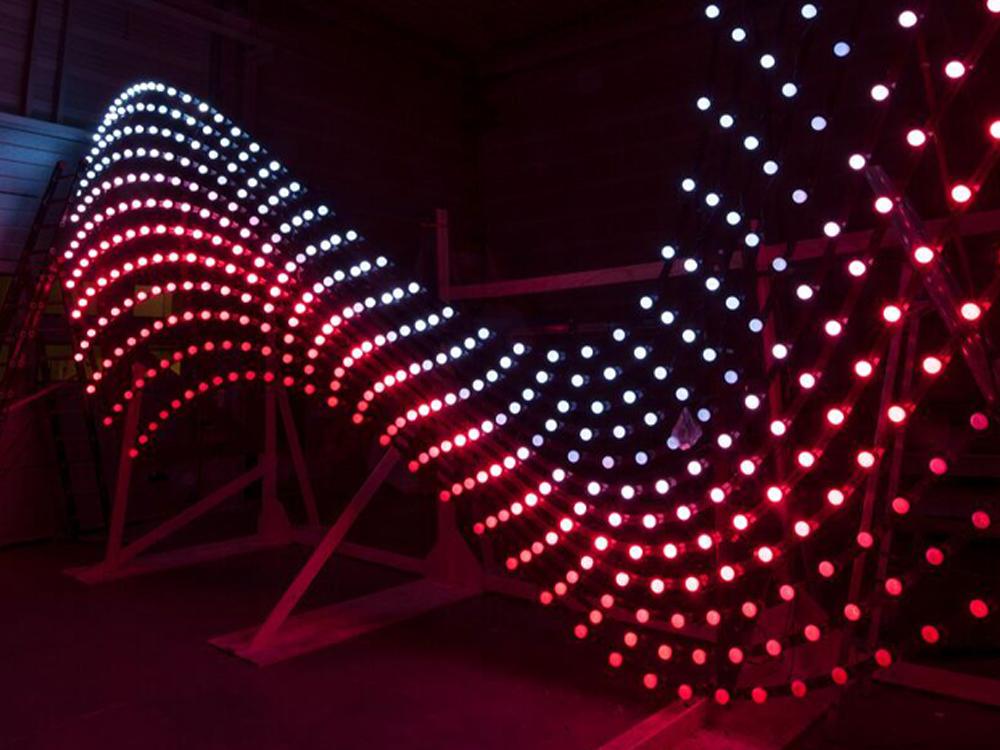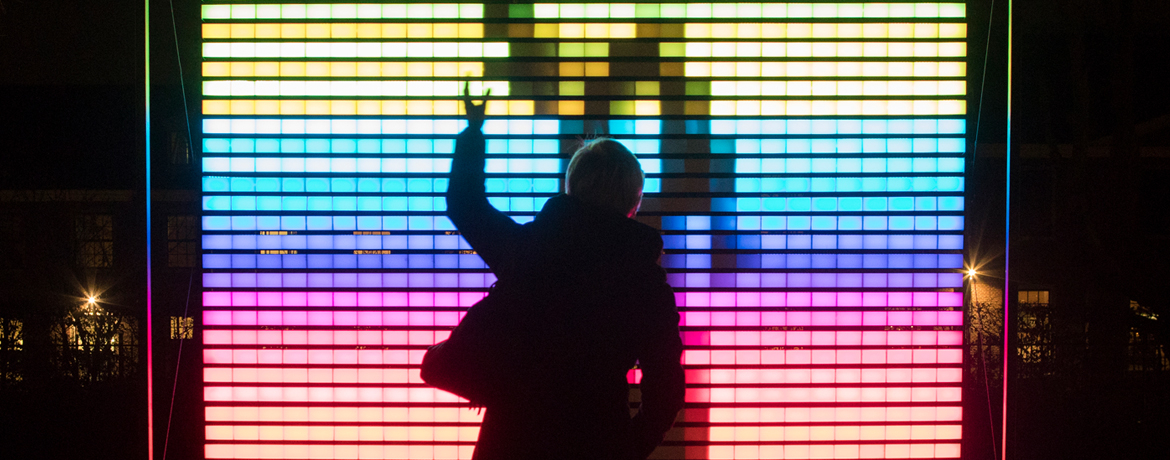LED light
"It took many years before we could get all the colours we see today. For example, it was used in remote controls in the infrared range of light to change your TV channels before it was used to light our homes."
In this series we will take a look at all the types of light sources across human history and show how artists have used each light source to make beautiful light art throughout Amsterdam Light Festival’s twelve editions to date. Today's subject: LED light.
The first Light Emitting Diode (LED) was invented in 1927 by Oleg Losev. LEDs are semiconductors which emit light at the frequency corresponding to the energy required to push electrons into their excited state. Two conductive materials, one more conductive than the other, are place on opposite sides of the diode. When voltage is provided to the less conductive side of the diode, it makes it super positive, sucking a negative charged electron over to fill a gap in the other semiconductor. Once the electron fills the hole in the semiconductor it releases energy as light.

It took many years before we could get all the colours we see today. For example, it was used in remote controls in the infrared range of light to change your TV channels before it was used to light our homes. After improvements were made by Shuji Nakamura in 1995, LEDs became more common place as lighting solutions for your home and for use in light art!
Most artworks today are made with LEDs. They can vary in shape, size, colour and intensity. They are the light source of choice for many artists because of their energy efficiency, small size and life span. LEDs make a number of sculptural shapes possible which would be difficult to achieve but not impossible!) with other light sources. And LEDs can be programmed to display different colours and intensities to produce shapes and moving patterns just like in Frank Tjepkema’s Light Bridge from Edition 3 and UxU Studio’s Inversion Waterfall from Edition 11.
